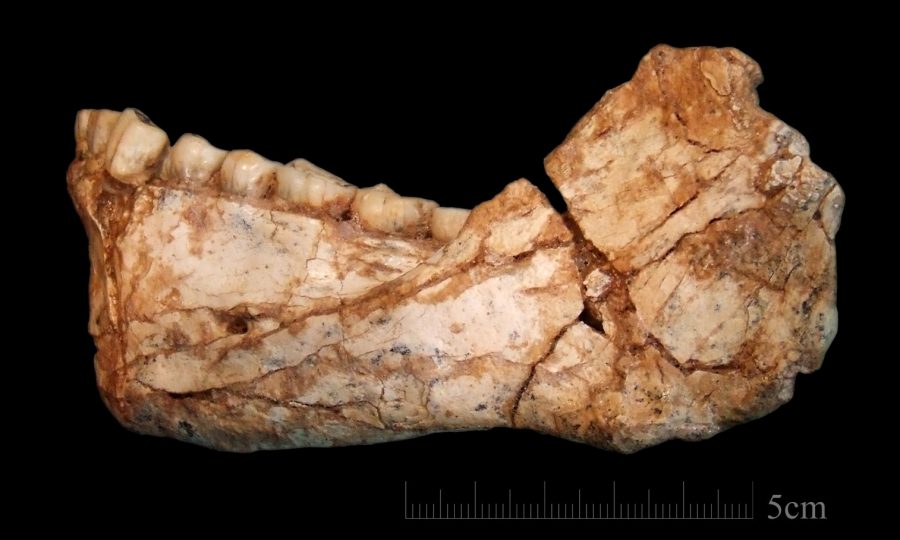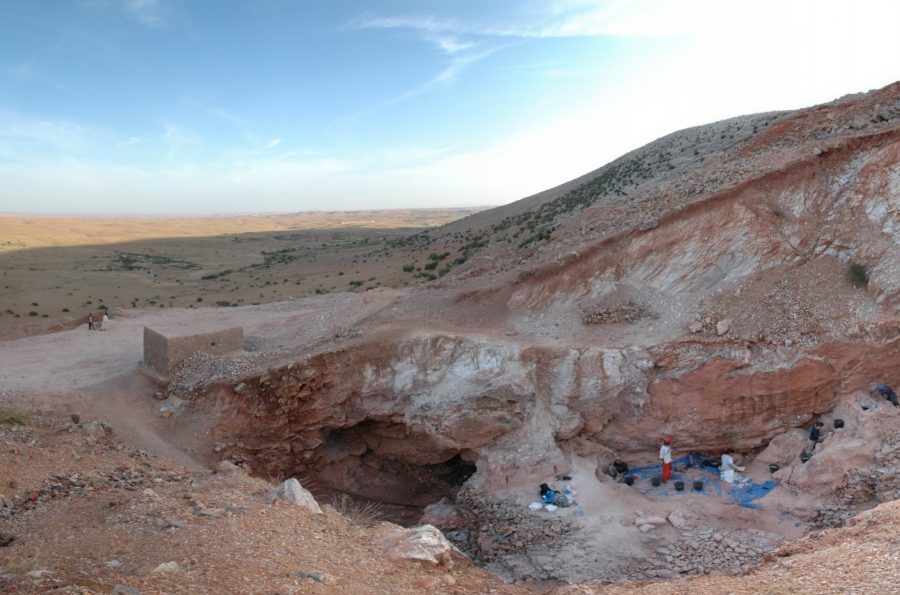Archaeologists discovered in Morocco the fossil of a Homo sapiens that appears to be older than 300,000 years.
The fossil is 100,000 years older than the oldest Homo sapiens remains on record. This is the first time this type of fossil is found in the northern regions of Africa. According to the study, researchers found the remains in a cave on Jebel Irhoud, Morocco. The site contains one of the earliest archaeologic assemblages of the Middle Stone Age, resulting in the oldest Homo sapiens ever found.


The oldest Homo sapiens to date
The remains appear to belong to five different specimens, including two young subjects. The finding suggests that the Homo sapiens might have originated throughout the whole African continent, and not just its eastern regions.
The previous oldest Homo sapiens fossil was found in Omo Kibish, Ethiopia, which has led researchers to believe that that’s where modern humans first originated. Another find was a skull unearthed from Florisbad, South Africa in 1996, which then defied the possibility of a single evolutionary hub.


Researchers believe that the Moroccan specimens used the cave as a shelter while they hunted, in what at the time was a lush, green Sahara desert.
Using computer modeling, researchers saw that the face of the specimens found in Morocco was very similar to ours, although they had rather primitive traits, including an elongated skull and a pronounced brow.
Excavations at Jebel Irhoud started in 2004, although the place had already been a hotspot for archaeological finds since the 1960s when miners found ancient stone tools used by the Neanderthals. In later studies it was later determined that the species that crafted those tools could have been a different hominin species, as back then there were not enough remains to differentiate Neanderthals from other ancient hominins. At first, it was believed that the tools were about 40,000 years old.
The new evidence led researchers to take another look at previous finds made at Jebel Irhoud. They analyzed the stone tools found in the past and saw that these artifacts were susceptible to heat, which could reveal just how old they were. The analysis concluded that the stone tools were between 300,000 and 350,000 years old.
Alongside the human fossils, there were animal remains, which provided clues on the early Homo sapiens’ diet. Researchers saw that the earliest of our kin fed on gazelle, zebra, and even ostrich eggs. They also broke large bones to eat the marrow.
“I think the overall picture we’re looking at from the archaeological data is a hunting encampment, a place where people passing across the landscape took shelter at night as they moved through the area in search of subsistence,” stated Shannon McPherron from the Max Planck Institute for Evolutionary Anthropology in Leipzig, Germany.
Supporting the theory of a greener ancient Africa
The findings help support the theory that Africa was greener and more densely populated by animals and hominins than we think. Jean-Jacques Hublin, a co-author of the study, believes that the Homo sapiens evolved scattered in several parts of Africa, and although they were isolated at times, they managed to come in contact with other tribes when the landscape was different, paving the way for new genetic exchanges.
In related research, scientists from King’s College London believe that the Sahara had many lakes and rivers between 6,000 and 10,000 years ago.
They came up with this theory after seeing that many marine species have populations both north and south of the Sahara, some of these being the tilapia, the catfish, and several varieties of freshwater snails. A similar endeavor seems to have occurred on the Nile, where both humans and animals managed to cross these bodies to migrate to other regions.
Hypothesizing that fish could cross the Sahara, researchers then proposed that humans should have been able to do so as well. It was later discovered that ancient inhabitants of the southern Sahara hunted marine species with spears and fish hooks.
“We confirmed that they display this surprising combination of very advanced features and more archaic conditions. It allowed us to envision a more complex picture for the emergence of our species with different parts of the anatomy evolving at different rates, some features being fixed very early in a modern way and others taking a longer time to reach the modern condition,” stated Hublin.
Hublin suggests that one should not think that Morocco is the cradle for modern humans, but that it would be more accurate to believe that 300,000 years ago, the Homo sapiens was already scattered all over Africa. Additionally, because the continent at the time was very different than what it is today, hominin species could have migrated easily from one part to another.
The research team assures that they are not done with Jebel Irhoud, as they have not yet found a reliable DNA sample, which would be invaluable for our understanding of our history as a species.
Source: Nature
